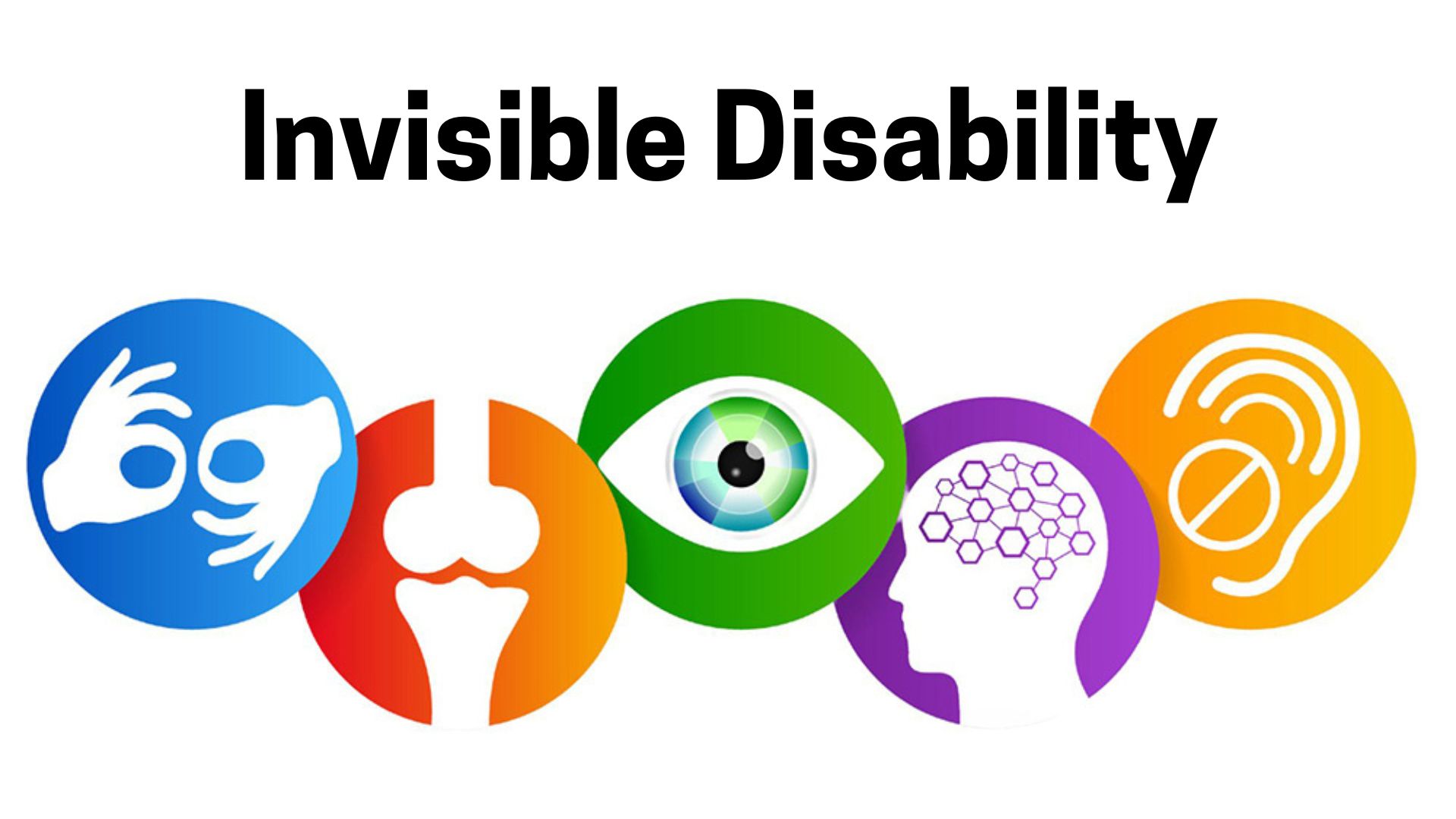
“According to the Americans with Disabilities Act of 1990 (ADA) an individual with a disability is a person who: Has a physical or mental impairment that substantially limits one or more major life activities; has a record of such an impairment or is regarded as having such an impairment (Disability Discrimination).
Furthermore, “A person is considered to have a disability if he or she has difficulty performing certain functions (seeing, hearing, talking, walking, climbing stairs and lifting and carrying), or has difficulty performing activities of daily living, or has difficulty with certain social roles (doing school work for children, working at a job and around the house for adults)” (Disabilities Affect One-Fifth of All Americans). Given this basic knowledge, it is easy to see how work to define invisible disability is both critical to helping so many who are overlooked but also daunting in scope.” [1]
“Invisible, or non-apparent, disabilities are physical, mental, or neurological conditions that can limit or challenge a person’s movements, senses, or activities, and can impact that person’s ability to learn or work.” [2]
“About 25% of U.S. adults have a disability, and most invisible disability metrics in the U.S. say that roughly as high as 20% (or more) of Americans have an invisible disability. Further, most people who have a disability don’t use obvious assistive technology like a wheelchair or cane, and the vast majority of people with a serious condition or illness have a hidden one.” [5]
It’s more likely, then, to meet someone with a hidden disability than an obvious one.
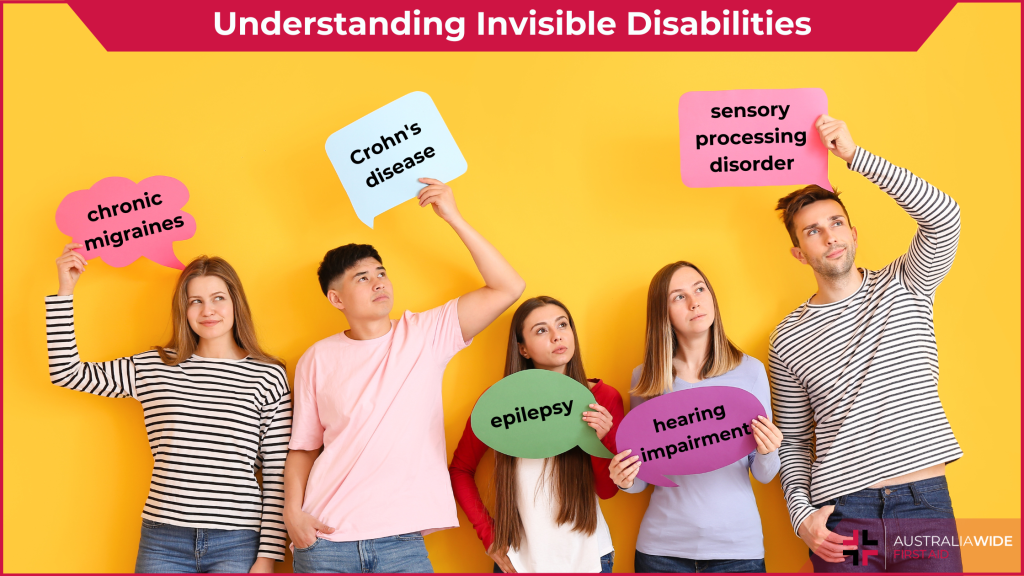
What Are Some Invisible Disabilities?
“Also called hidden or non-visible disabilities (NVD), invisible disabilities are conditions that significantly impair daily living activities yet are not immediately apparent to others. It’s a broad term that encompasses a wide range of health concerns and disorders.
Roughly 10% of Americans have a medical condition that could be considered an invisible disability, according to a review by advocacy group Disabled World. Some invisible disabilities are:
- Sitting disabilities. Chronic back pain may cause a person to experience severe discomfort when sitting for long periods or on hard surfaces.
- Auditory disabilities. People who experience hearing loss but do not use hearing aids, or who use discreet hearing aids, may not appear to others to live with a disability.
- Visual disabilities. People who experience vision loss but do not wear glasses, or who may wear contact lenses, may similarly appear to live without a disability.” [3]
“Often, invisible disabilities are chronic illnesses. According to Disabled World, 96% of people with chronic medical conditions live with an invisible illness. These include:
- Cancer
- Chronic fatigue syndrome
- Diabetes
- Fibromyalgia
- Arthritis
- Endometriosis
- Autoimmune disorders
- Sleep disorders
- Renal failure
- Resources” [3]
“Invisible disabilities can also include disorders that affect learning and cognition, including:
- Autism spectrum disorder
- ADHD (attention-deficit/hyperactivity disorder)
- Dyslexia” [3]
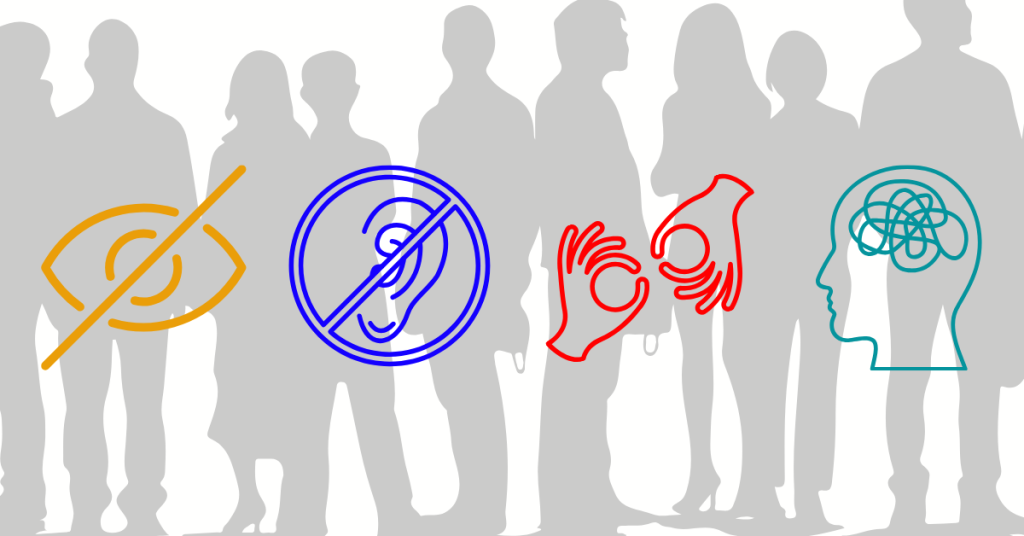
People with invisible disabilities are protected by the ADA and entitled to accommodations
“The ADA does not stipulate that a disability has to be visible for a person to receive protection from discrimination. Oftentimes, people with invisible disabilities face discrimination because there are many false assumptions about needed accommodations for this subset of the population. They have the same legal rights as other people with disabilities – rights to access, accommodations, and they are not to be discriminated against based on their disability.” [4]
People of all ages have and can acquire invisible disabilities
“Disability is unique because it is the only minority group that a person can join at any time in their life. That means that a child or adult could have a disability. Just like a physical disability can be obtained at any time in life, so can all other categories of disability. We often think of learning disabilities as only impacting children. There are countless numbers of adults that face challenges or use accommodations to function with their invisible disabilities.
Invisible disabilities are everywhere. They affect millions of people. They should be held to the same standards and considerations as all other disabilities. No person should be discriminated against because of disability hidden or visible.” [4]
“People with invisible disabilities may face challenges such as:
- Being afraid to reveal their condition for fear of not being understood
- Not wanting to be seen as sick
- Feeling like they’ve missed out on life
- Limited treatment options
- Uncertainty about whether they’ll ever be healed
- Feeling isolated or like a failure” [6]
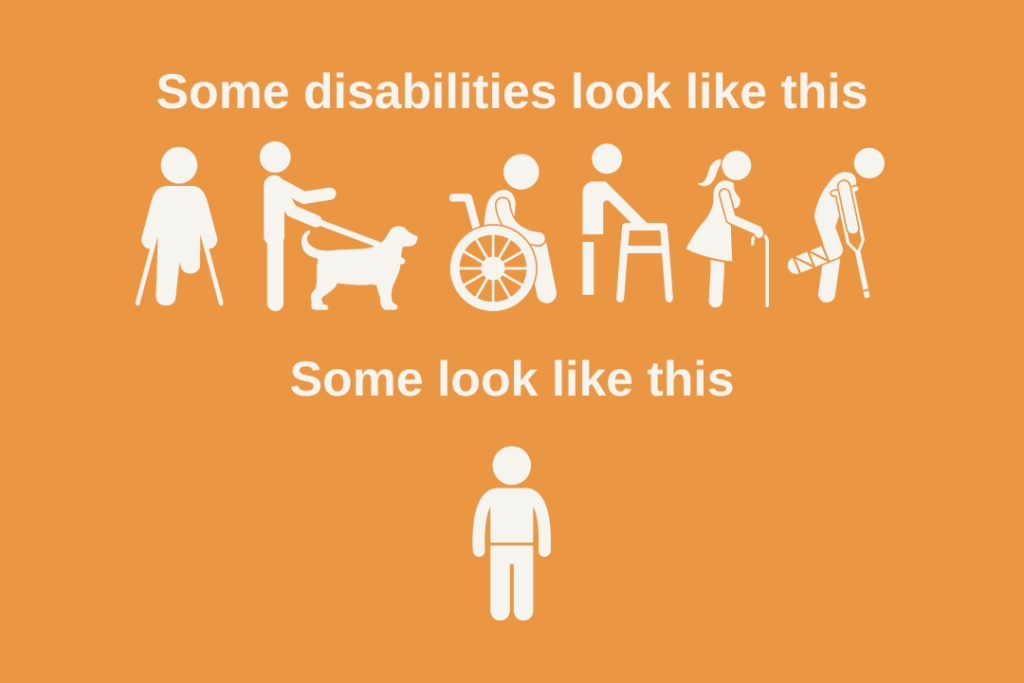
How we can help people with Invisible disabilities?
“Here are some ways to help people with invisible disabilities:
- Create a safe space: Encourage open communication and listen actively to their experiences.
- Show empathy: Demonstrate empathy by listening, offering support, and acknowledging their experiences.
- Provide reasonable accommodations: The Americans with Disabilities Act (ADA) requires that people with disabilities be provided with reasonable accommodations.
- Educate yourself: Learn about the invisible disability.
- Let them tell their own story: Encourage individuals with invisible disabilities to share their stories.
- Practice the Golden Rule: Treat everyone as you would like to be treated.
- Ask before giving assistance: Just because a person has a disability, they don’t necessarily need or want your assistance.
- Think before you speak: Avoid showing pity or being patronizing.
In the workplace, organizations can support employees with invisible disabilities by:
- Normalizing conversations about disability
- Offering flexible work options
- Creating a culture of trust
- Demonstrating fair and equitable supervisory practices
- Putting tasks in writing
- Installing adjustable lighting or obtaining ergonomic office furniture.” [6]
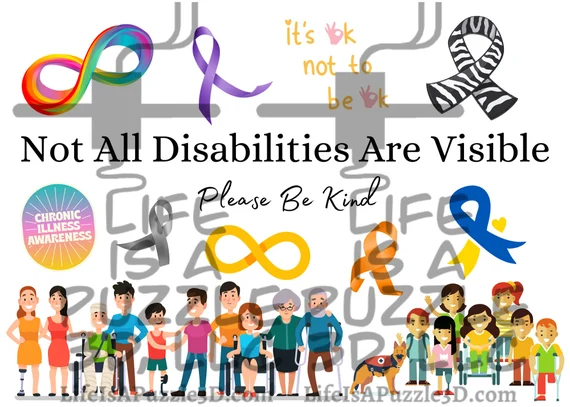
“Everyone with a disability is different, with varying challenges and needs, as well as abilities and attributes. Thus, we all should learn to listen with our ears instead of judging with our eyes.” [1]
Resources
[1] https://invisibledisabilities.org/what-is-an-invisible-disability/
[2] https://www.nea.org/nea-today/all-news-articles/what-know-about-invisible-disabilities
[3] https://onlinedegrees.bradley.edu/blog/what-are-invisible-disabilities
[4] https://www.accessliving.org/newsroom/blog/five-things-you-didnt-know-about-invisible-disabilities/
[5] https://www.accessibility.com/disabilities/invisible-disabilities
[6] Google AI
